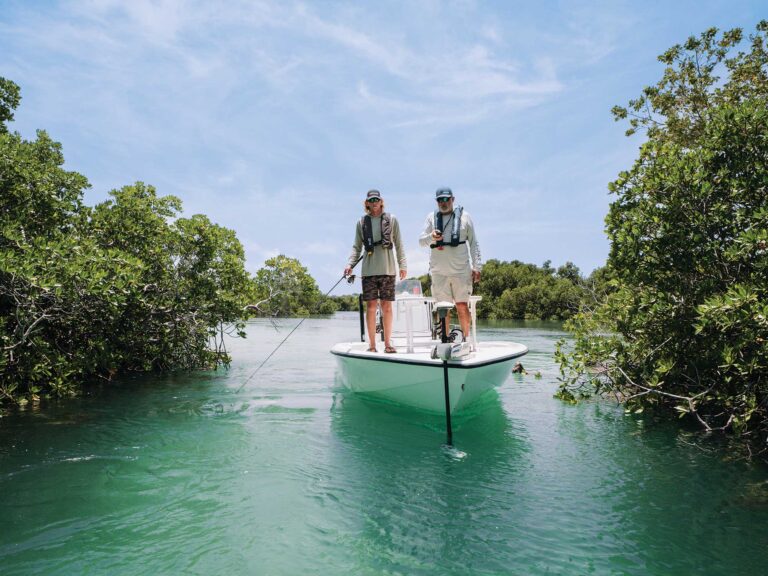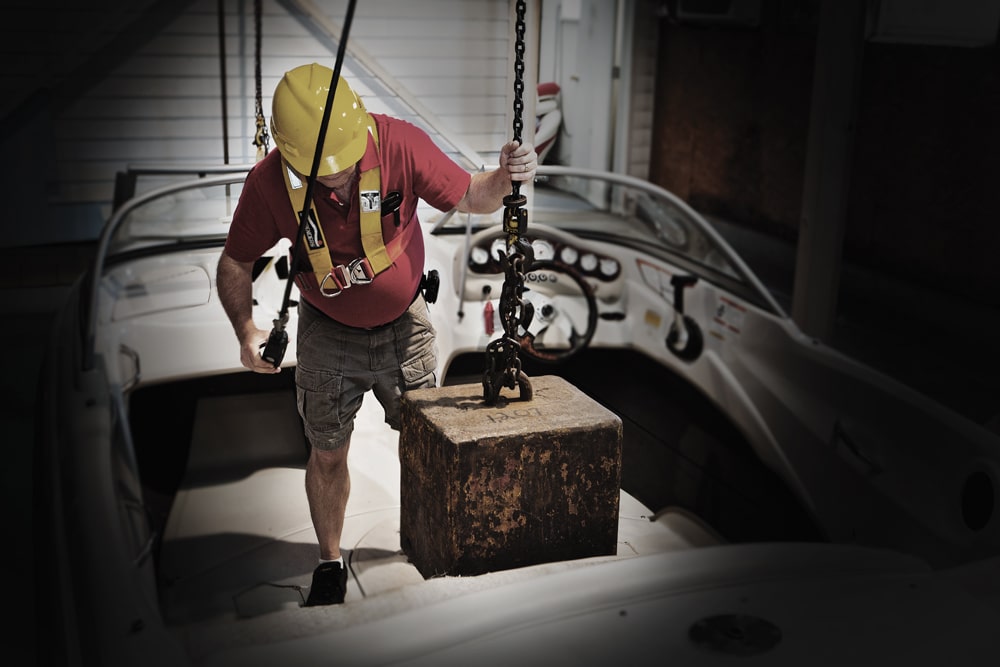
“She’s at the limit,” notes Sandberg, as the red 19-foot bowrider in the test tank settles to the black lines marked on the duct tape covering the engine compartment vents. He and his three-man crew carefully total the weights they had placed into the boat to simulate engine, people and gear and record the number on a whiteboard beside the tank. This gives them the hull’s actual displacement with what its manufacturer had set as its full-rated load, a load the team verifies by pumping water into the hull to try to sink it.
First off, a boat’s job is to float. Preferably upright, keeping the water out, in an attitude that allows it to carry its people (and their gear) where they want to go. But bad things happen, even to skillful skippers. When most boats were built of wood, even a sunken hull was likely to float enough to give its people something to hang onto until rescuers arrived.
Not now. Modern composite construction is remarkably light and strong, but without specific flotation elements added, the most sophisticated fiberglass hull will sink if swamped. The Federal Boat Safety Act of 1971 was designed to protect America’s boaters from this problem and others stemming from the increasing size and complexity of our country’s recreational fleet. Through various amendments, it has now passed into Title 46 of the U.S. Code. But just because the law is on the books doesn’t necessarily mean that a boat has adequate flotation.
So how does a boat buyer know if the newly purchased Pride and Joy will sink? To find out, Boating visited the Maryland facility to watch Sandberg and his team sink a boat to help make other boats safer for all of us.
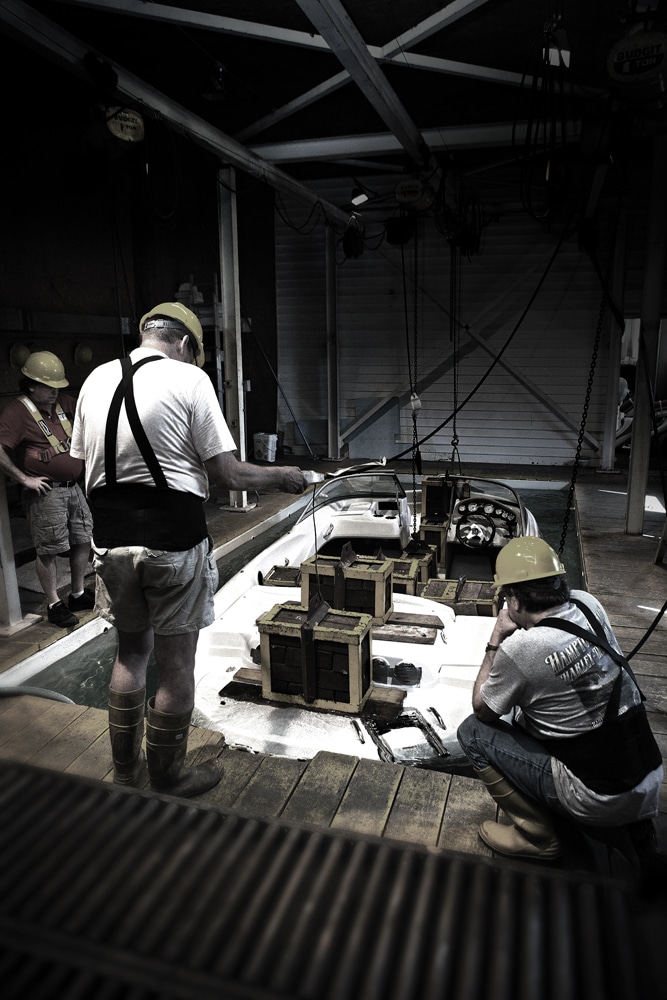
Helping Make Safer Boats
This is not a Gotcha! operation. The Coast Guard’s National Recreational Boating Safety Program (uscgboating.org/about/strategic_plan.aspx) helps boatbuilders produce safe boats, helps dealers make sure customers can get the knowledge and equipment to enjoy their boats safely, and helps skippers and their families stay safe. Education is its watchword. Thus, the program covers a wide range of topics, from flotation, plumbing and wiring to life jackets. The boating safety program employs compliance associates whose job it is to develop good working relationships with boatbuilders and make regular factory visits to review building practices and processes. “It’s better to advise than to regulate,” one associate says to us at the test facility. “Solving problems before they cause accidents saves everybody money, time and heartache.”
The Federal Aid in Sport Fish Restoration Act trust fund (aka Wallop-Breaux Trust Fund) finances the boating safety program. Money comes from the excise taxes we all pay on new fishing tackle and recreational boat purchases. The staff works closely with the American Boat and Yacht Council and the National Marine Manufacturers Association, whose members build about 85 percent of America’s recreational boats.
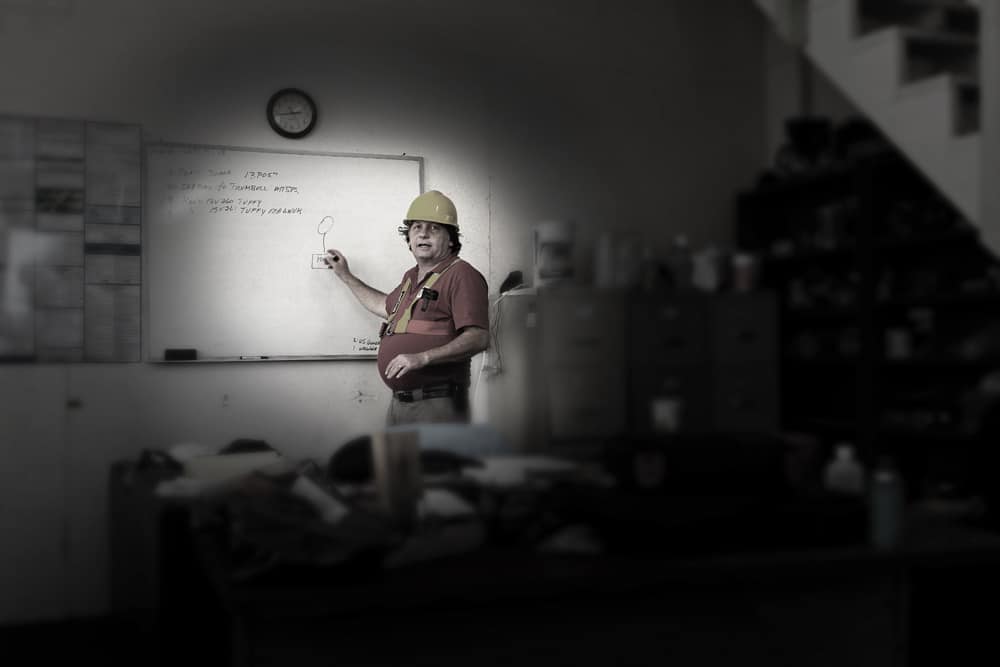
There are three ways that a boat can end up in the RBTF tank. First, a manufacturer can volunteer to have a new model tested. “No one has ever told me it was a waste of time,” Sandberg remarks when we visit. As an incentive, a volunteer manufacturer can even get reimbursement for travel expenses and a per diem.
The second way a boat comes to the RBTF in Solomons is through an accident report that suggests a problem with flotation. The third trigger comes when a boating safety compliance associate notices something not quite right during a factory visit or in product literature.
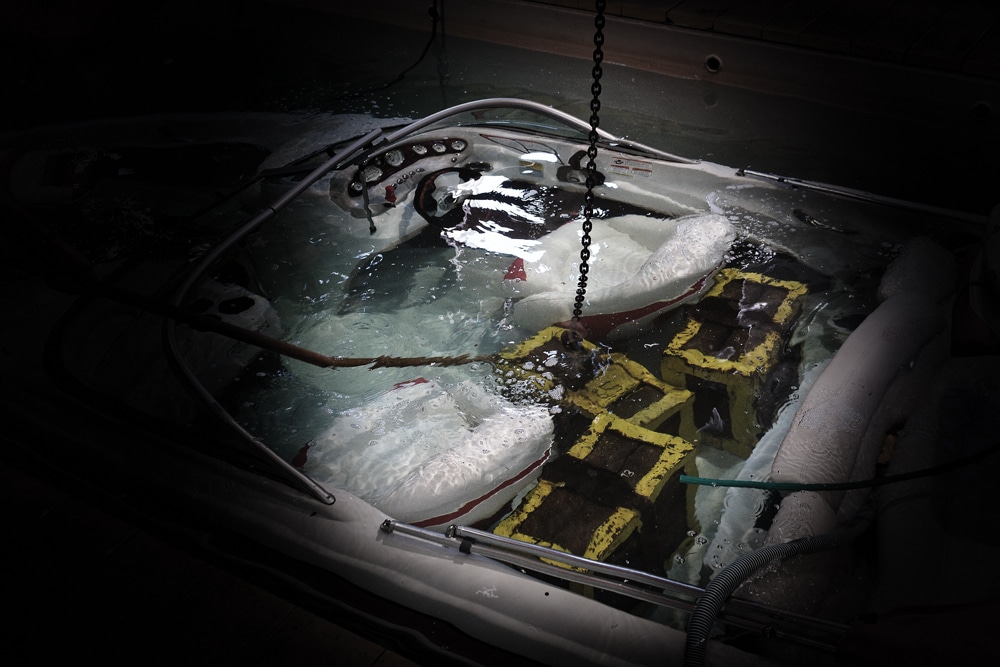
A Real-Life Boat Is Tested And…
The red bowrider, the boat that we watch being tested, falls into the last category. It’s the second generation of an all-around water-sports model built by a major manufacturer. The original model was powered by a carbureted 4.3-liter V-6 sterndrive engine and rated for eight people. For 2013, the 4.3 engine has multiport fuel injection and a California-compliant catalyst exhaust system, all of which adds 300 pounds to the boat’s total weight. But the persons capacity has remained the same at eight. The boat’s gunwales are open underneath, limiting space where flotation foam can be installed. A Coast Guard recreational boating safety staffer checking the company’s model lineup noticed these specifications and triggered an anonymous purchase of the model from a dealer’s showroom.
One more point about this bowrider and her sisters: A sterndrive boat is required to have only “basic flotation,” which means that when fully loaded at least a part of it will remain above water for crew to hang onto until rescue. Sterndrives don’t have adequate space at their transoms for flotation to counteract the weight of their engines. Outboard boats under 20 feet with over-2-horsepower engines, on the other hand, must float level, as defined by a specific set of regulations in the flotation section of U.S. Code Title 46.
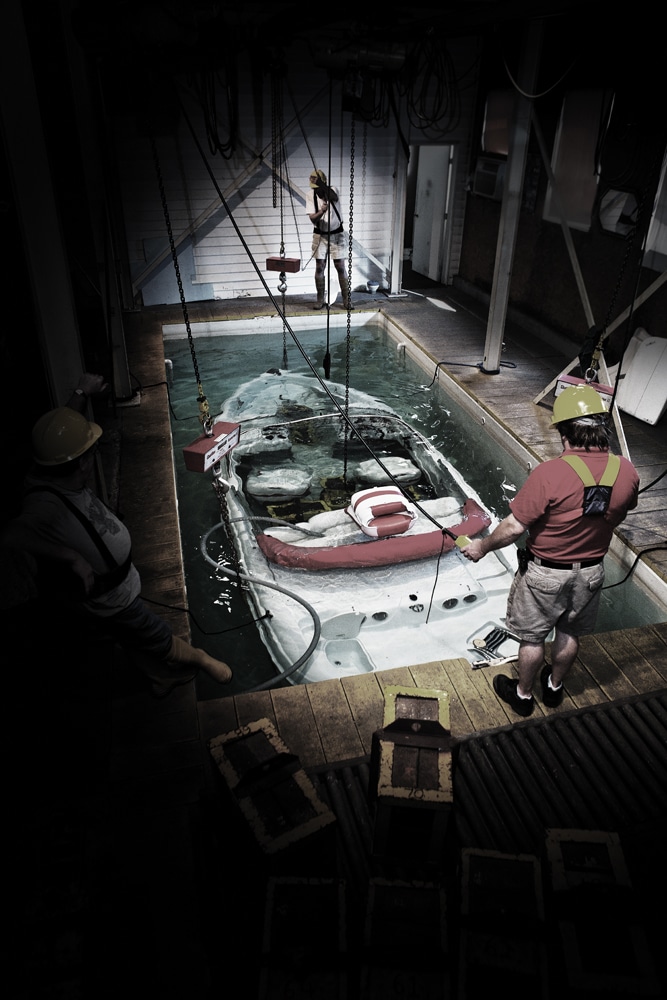
The Tank Does Not Lie
Swamped, the red bowrider looks kind of sad. It has those precision weights placed where people, machinery and gear would be, including the forward cockpit in front of the windshield. That weight has bowed the sole of the hull’s liner so that the windshield won’t close. Sandberg’s crew have placed precision scales on the chainfalls fore and aft to gauge the weight of the swamped boat in relation to the hull’s buoyancy shown by the displacement test. They have also drilled holes at strategic points in the gunwales to allow any trapped air to escape. Yes, this is a worst-case scenario, but remember that the boat is being tested against the federal minimum standard for flotation.
The scales yield some preliminary information, though air still bubbles slowly from under the boat’s decks. The test team manipulates the boat and its weights with boathooks and gradually lowers it more. It settles “gracefully” (fairly evenly), indicating that what flotation it has was placed strategically by the builder. At this point, knowing the weights in it and adjusting them by a small factor for their own buoyancy (yes, even pig iron has a little bit of buoyancy), Sandberg computes the difference between their total and the weights showing on the three scales: 8 cubic feet of foam buoyancy. The crew lowers the bow a little more to burp air and the total weight increases slightly, reducing the buoyancy to 7.5 cubic feet. Right now, the boat is passing, but by a razor-thin margin.
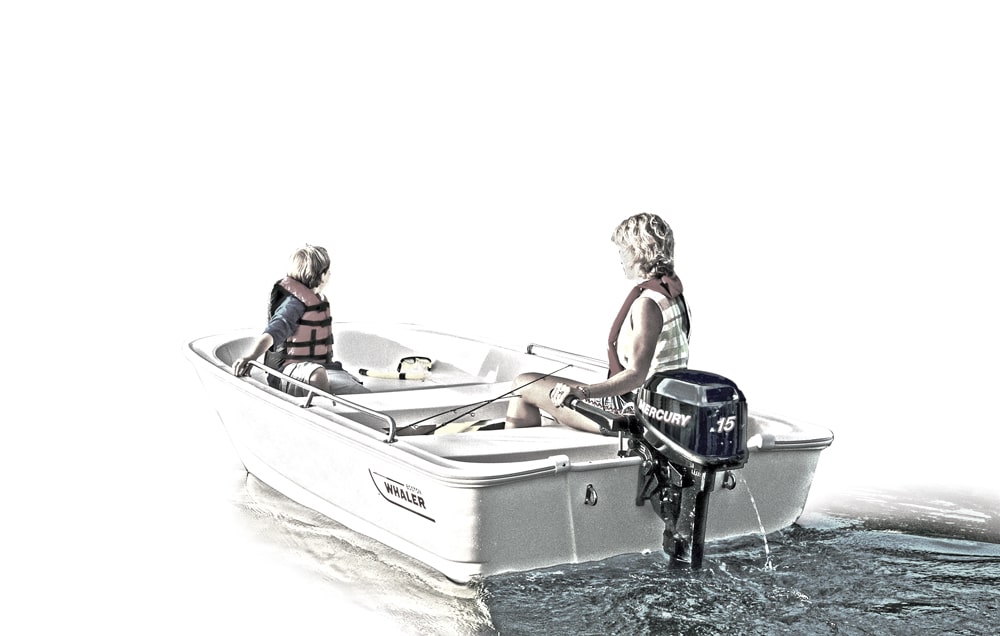
“I’m a 20 percent guy myself,” Sandberg remarks, referring to the minimum amount of margin he prefers to see. In the course of trying to sink more than 1,000 boats, he has seen everything, including a boatbuilder well known for its high quality that volunteered a model and failed. That boat turned out to have a less-than-specified amount of foam flotation. The guy running the spray gun had had a bad day, and the quality control team had missed the mistake. But it’s better to find out about a glitch like that in the RBTF tank than in an accident that causes a boater to drown.
To conclude the standard test protocol, the crew leaves the red bowrider in the tank overnight, allowing it to soak for 18 hours to get rid of all of the trapped air. The number from the previous afternoon holds, and it passes officially, but not by enough to ensure any margin of safety against a worker’s glitch. Sandberg writes his report and passes it on to the Coast Guard’s National Recreational Boating Safety Program. There, several compliance associates go over it carefully before counseling the manufacturer.
Once again, it’s better to advise than to regulate. The threat of liability is a big motivator for a boatbuilder. This boat is the kind of runabout model often bought by first-time or inexperienced boaters. That’s where the value of partnerships between the Coast Guard’s compliance associates and the boatbuilders comes in. “There’s no secret sauce,” says Eric Johnson, engineer with the Office of Boating Safety, during the test. “Building safe recreational boats is still about design, engineering, construction and quality control. We can’t regulate stupid, but we can educate, educate, educate. We want to [be] as sure as we can that every boat is safe when it reaches a dealership’s floor.”
Steve Sandberg just smiles at that little speech. Even though he sinks boats for a living, he’s a boater too.
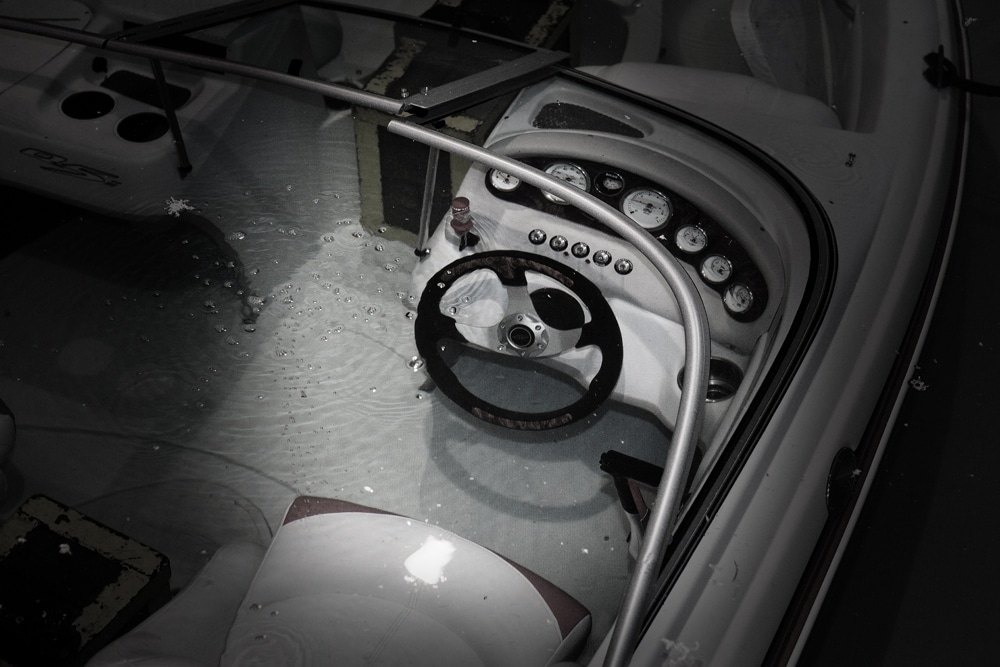
Resources for More Information
• Safe Afloat is the website of the U.S. Coast Guard’s Recreational Boat Testing Facility (safeafloat.com). It offers several good videos of the testing process, plus interviews with Steve Sandberg and Coast Guard boating safety personnel.
• Port Townsend Watercraft in Washington state towed one of its pretty 18-foot Port Townsend Skiffs cross-country to volunteer for the RBTF tank; read about it at ptwatercraft.com/blog/?p=1120.
• Chesapeake Light Craft, the Annapolis, Maryland, builder of sophisticated kits for stitch-and-glue construction, volunteered its 15-foot-6-inch Peeler Skiff for the RBTF; read about it at clcboats.com/life-of-boats-blog/peeler-power-skiff-coast-guard-testing.html.
• The U.S. Coast Guard Recreational Boating Safety Office’s Boating Safety Resource Center (uscgboating.org), offers a great deal of information about the provisions in the U.S. Code of Federal Regulations (CFR) concerning how to boat safely. A one-stop location for safety gear and operation is the 86-page A Boater’s Guide to the Federal Requirements for Recreational Boats and Safety Tips, available at uscgboating.org/assets/1/workflow_staging/Publications/420.PDF.
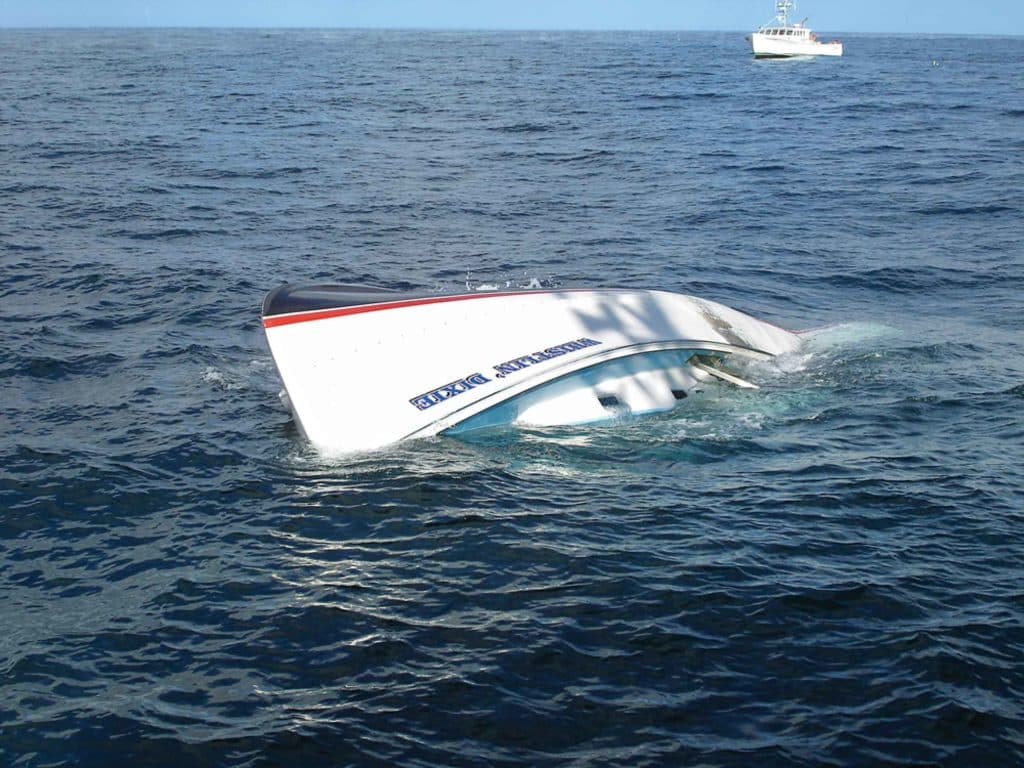
A basic flotation rule requires that the boat be manufactured with sufficient flotation material to keep it afloat in the event of a swamping. It does not require that the boat remain in an upright or any specific position. It may float, and usually does, in a “spar” position, the bow sticking up and the stern sunk. Applies To: Monohull inboards, inboard/outboard boats and airboats less than 20 feet in length must comply with a basic flotation system. Exceptions: Sailboats, canoes, kayaks, inflatable boats, submersibles, surface-effect vessels, amphibious vessels and race boats. Level Flotation
A level flotation system requires that the swamped boat, loaded with certain weights representing weight capacity (part of the persons capacity and some equipment), must float in an approximately level position and not heel past a certain angle, even when part of the passengers’ weight is on one side of the passenger carrying area. Applies To: Monohull boats under 20 feet in length and rated for more than 2 horsepower must comply with this more sophisticated flotation system. Exceptions: Sailboats, canoes, kayaks, inflatable boats, submersibles, surface-effect vessels, amphibious vessels and race boats. Modified Level Flotation
Modified level flotation is similar to level flotation, but with variations in the persons weight and capacity weight numbers. Applies To: Manually propelled boats and boats rated for outboard engines of 2 horsepower or less must comply with the modified level flotation requirements. Boating Magazine
• The Federal Aid in Sport Fish Restoration Act trust fund: To learn more about this trust fund, into which we all pay as boaters and anglers, visit wsfrprograms.fws.gov/Subpages/GrantPrograms/SFR/SFR.htm.
• The American Boat and Yacht Council (ABYC) brings together boat manufacturers, marine surveyors, experienced service technicians, Coast Guard boating safety personnel and other boating experts to develop safety best practices and manufacturing standards for recreational boats; visit abyc-inc.org.
• The National Marine Manufacturers Association (NMMA) represents manufacturers that build about 85 percent of the U.S. recreational fleet. The NMMA and many of its members work closely with the Coast Guard’s Recreational Boating Safety Office and the ABYC on safety standards, including those for small-boat flotation. Visit nmma.org.








